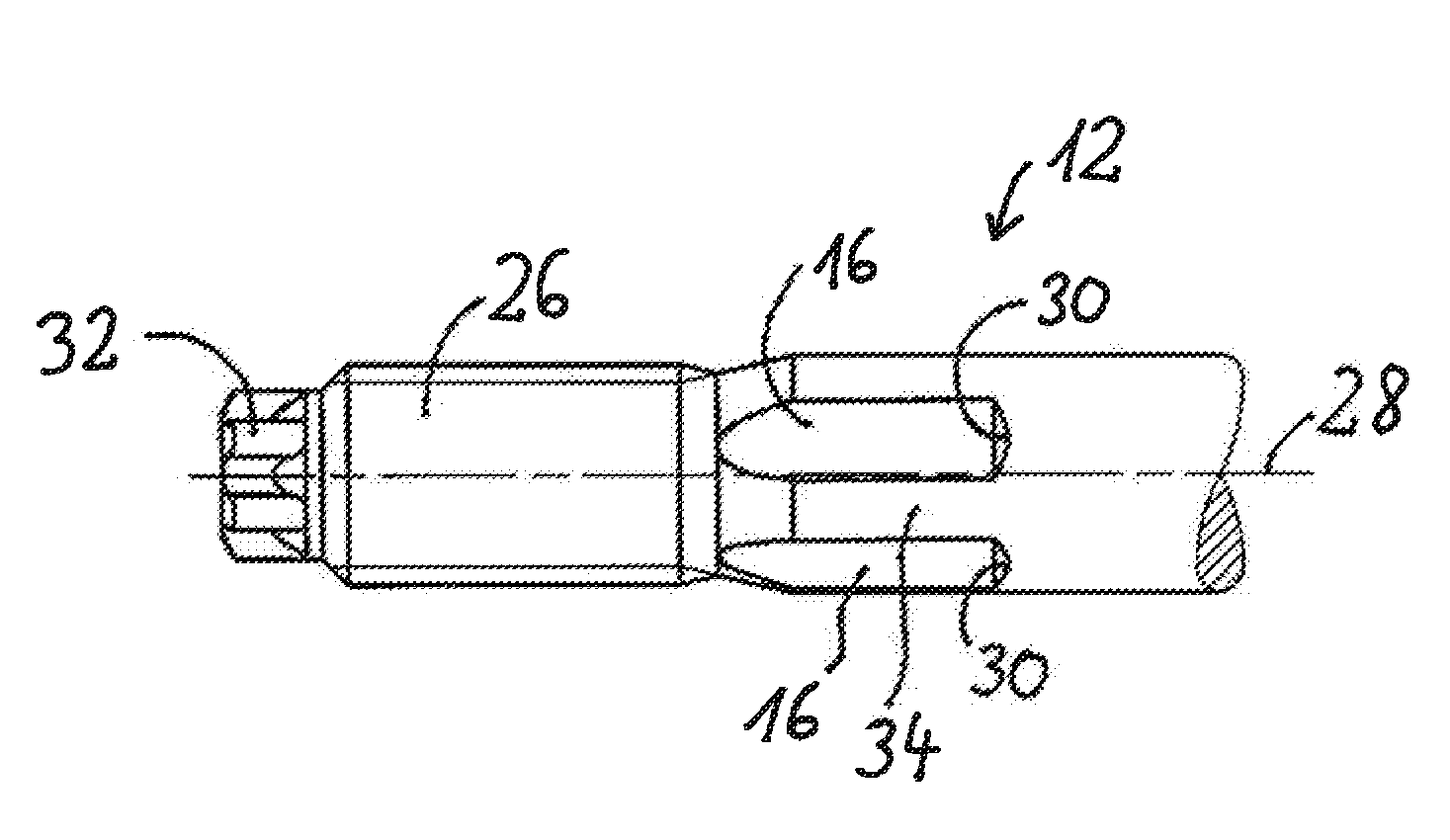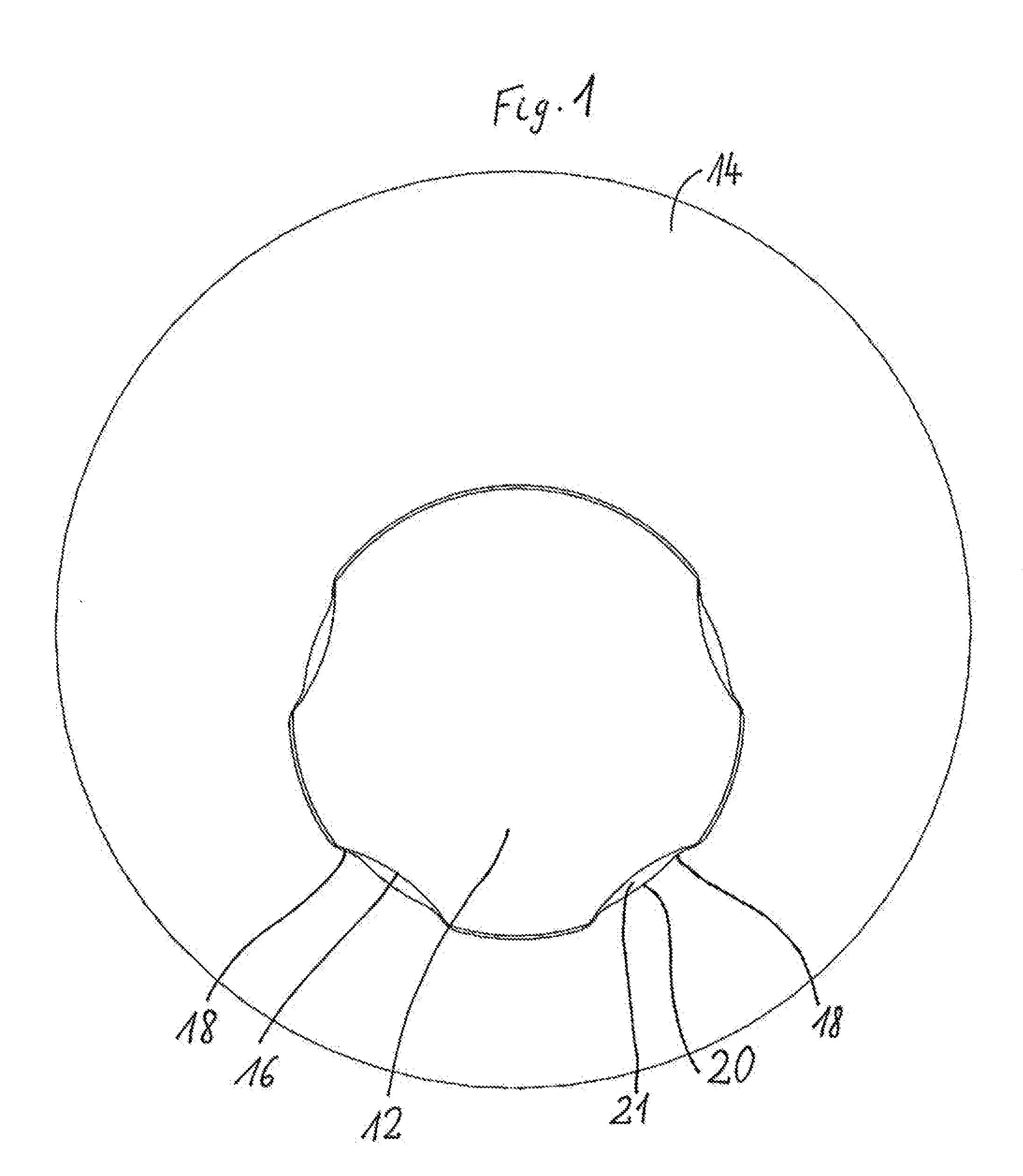Profiled Members for Transferring Torques and Torque-Locked Connection
- Summary
- Abstract
- Description
- Claims
- Application Information
AI Technical Summary
Benefits of technology
Problems solved by technology
Method used
Image
Examples
Embodiment Construction
[0007]The object of the present invention is therefore to provide a connection between a shaft and a hub part, as well as a suitable profiled member therefor, which connection is suitable for the transfer of large torques, wherein the shank does not have to be oversized, yet a sufficient transfer of torque and a continuous, i.e. uninterrupted external thread are sill provided.
[0008]In accordance with the invention this object is achieved by profiled members for transferring torques between a hub and a journal or a shaft, wherein the hub is secured by a nut screwed onto a continuous external thread attached to the profiled member, and the difference between the outer diameter of the external thread and the outer surrounding circle of the profiled member is no more than 1 mm.
[0009]In accordance with the invention a specific profiled member can, for the first time, be created in which the lowest point of the profiled member on the shank is positioned radially lower than the thread diam...
PUM
 Login to View More
Login to View More Abstract
Description
Claims
Application Information
 Login to View More
Login to View More - R&D
- Intellectual Property
- Life Sciences
- Materials
- Tech Scout
- Unparalleled Data Quality
- Higher Quality Content
- 60% Fewer Hallucinations
Browse by: Latest US Patents, China's latest patents, Technical Efficacy Thesaurus, Application Domain, Technology Topic, Popular Technical Reports.
© 2025 PatSnap. All rights reserved.Legal|Privacy policy|Modern Slavery Act Transparency Statement|Sitemap|About US| Contact US: help@patsnap.com



